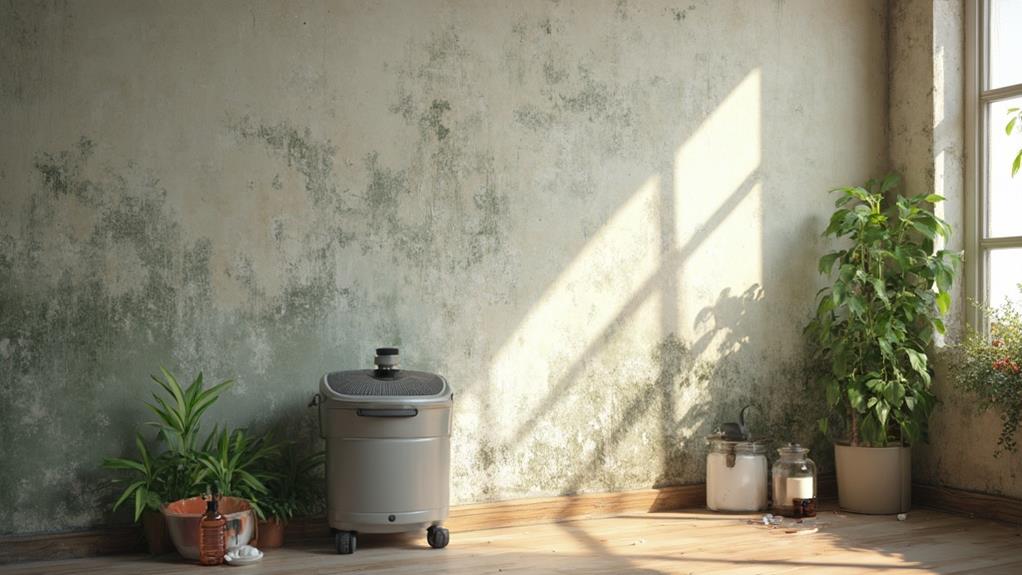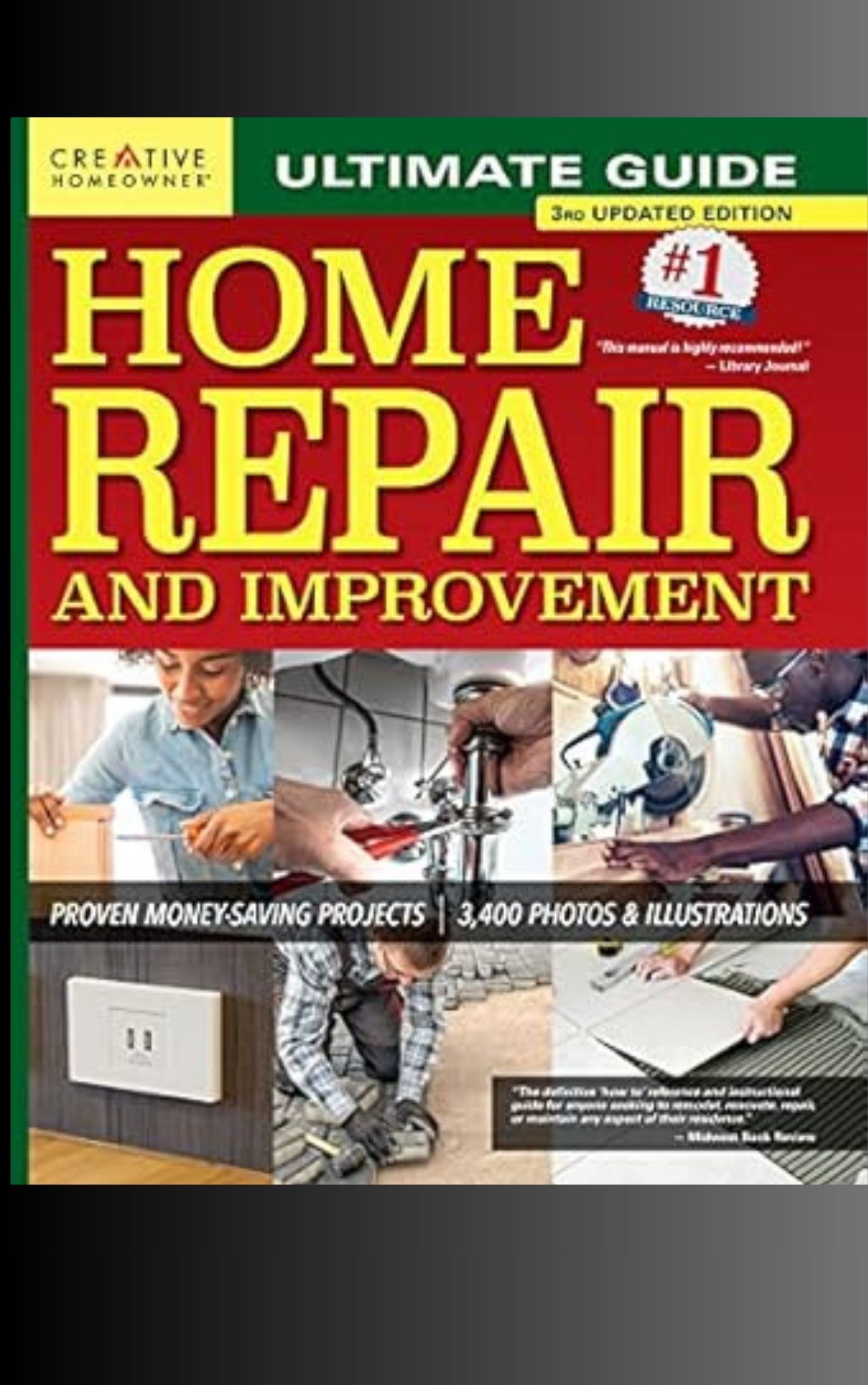Eco-friendly mold remediation offers effective alternatives to harsh chemicals. Natural antimicrobial agents like tea tree oil and grapefruit seed extract inhibit mold growth. Enzymatic cleaning solutions break down organic matter without damaging surfaces. HEPA filtration systems trap mold spores, while UV light treatment prevents reproduction. Moisture control techniques, including proper ventilation and dehumidification, are crucial for prevention. Essential oils, hydrogen peroxide, and vinegar-baking soda combinations provide powerful, natural cleaning options. Improved ventilation strategies, such as whole-house systems and heat recovery ventilators, maintain optimal indoor air quality. These approaches minimize environmental impact while effectively addressing mold issues. Exploring these methods further reveals a comprehensive toolkit for sustainable mold management.
Natural Antimicrobial Agents

Natural antimicrobial agents offer an environmentally friendly approach to mold remediation. These substances, derived from plant extracts, essential oils, and other natural sources, possess potent antifungal properties that can effectively combat mold growth without relying on harsh chemicals. Common natural antimicrobials include tea tree oil, grapefruit seed extract, and vinegar.
Tea tree oil, extracted from the Melaleuca alternifolia plant, contains terpinen-4-ol, a compound known for its strong antifungal properties. When diluted and applied to affected areas, it can inhibit mold growth and prevent future infestations.
Grapefruit seed extract, rich in polyphenols and flavonoids, exhibits broad-spectrum antimicrobial activity against various mold species. Its effectiveness lies in its ability to disrupt fungal cell membranes and inhibit enzyme production.
Vinegar, particularly white distilled vinegar, is another readily available natural antimicrobial agent. Its acetic acid content creates an inhospitable environment for mold, effectively killing up to 82% of mold species. These natural solutions not only address mold issues but also minimize environmental impact and reduce exposure to potentially harmful synthetic chemicals, making them ideal for eco-conscious homeowners and businesses seeking sustainable mold remediation options.
Enzymatic Cleaning Solutions
While natural antimicrobial agents offer effective mold remediation options, enzymatic cleaning solutions provide another eco-friendly approach to tackling fungal growth. These solutions contain specific enzymes that target and break down the organic matter comprising mold structures, effectively dismantling the fungal colonies at a molecular level.
Enzymatic cleaners typically contain proteases, lipases, and amylases, which work synergistically to degrade proteins, fats, and carbohydrates found in mold. This multi-faceted approach ensures comprehensive mold removal without relying on harsh chemicals. The enzymes continue to work as long as organic material is present, providing sustained cleaning action.
One significant advantage of enzymatic solutions is their specificity. They target mold and other organic contaminants without damaging surrounding materials or surfaces. This selectivity makes them ideal for use on porous surfaces like wood, fabric, and drywall, where traditional cleaning methods might cause damage.
Furthermore, enzymatic cleaners are biodegradable and non-toxic, posing minimal risk to human health and the environment. They can be safely used in various settings, including homes, schools, and healthcare facilities, making them a versatile and responsible choice for eco-conscious mold remediation.
HEPA Filtration Systems
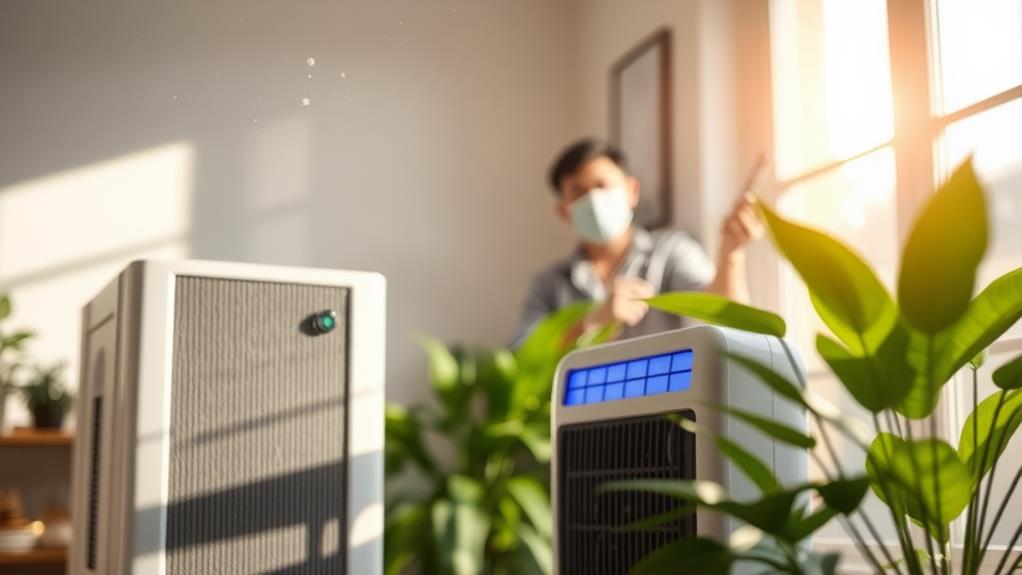
Harnessing the power of advanced filtration technology, HEPA (High-Efficiency Particulate Air) systems play a crucial role in eco-friendly mold remediation. These filters are designed to capture 99.97% of particles as small as 0.3 microns, effectively trapping mold spores, dust, and other airborne contaminants. By incorporating HEPA filtration into the remediation process, professionals can significantly reduce the spread of mold spores during cleanup activities.
HEPA filtration systems are particularly valuable in containing mold-contaminated areas and preventing cross-contamination to unaffected spaces. Portable HEPA air scrubbers can be strategically placed to create negative air pressure, ensuring that airborne particles are continuously captured and removed from the environment. This not only improves air quality but also minimizes the risk of exposure for remediation workers and building occupants.
Moreover, HEPA vacuums are essential tools for thorough surface cleaning, as they can safely collect mold debris without releasing spores back into the air. The use of HEPA filtration aligns with eco-friendly practices by reducing the need for harsh chemicals and promoting a cleaner, healthier indoor environment. When combined with other sustainable remediation techniques, HEPA filtration systems contribute to a comprehensive, environmentally responsible approach to mold removal and prevention.
UV Light Treatment
As an innovative and chemical-free approach to mold remediation, UV light treatment has gained traction in eco-friendly practices. This method harnesses the power of ultraviolet light, specifically UVC rays, to destroy mold spores and prevent their reproduction. UV light treatment works by damaging the DNA of mold organisms, effectively rendering them unable to grow and spread.
The process involves exposing affected areas to UVC light for a specified duration, typically using specialized UV lamps or LED devices. This treatment is particularly effective in areas prone to moisture and mold growth, such as bathrooms, basements, and HVAC systems. UV light treatment offers several advantages over traditional chemical-based remediation methods, including reduced environmental impact, lower long-term costs, and minimal disruption to living spaces.
However, it's important to note that UV light treatment is most effective as a preventive measure or for treating surface mold. For extensive or deep-rooted mold infestations, it may need to be combined with other remediation techniques. Additionally, proper safety precautions must be taken when using UV light, as direct exposure can be harmful to human skin and eyes.
Moisture Control Techniques
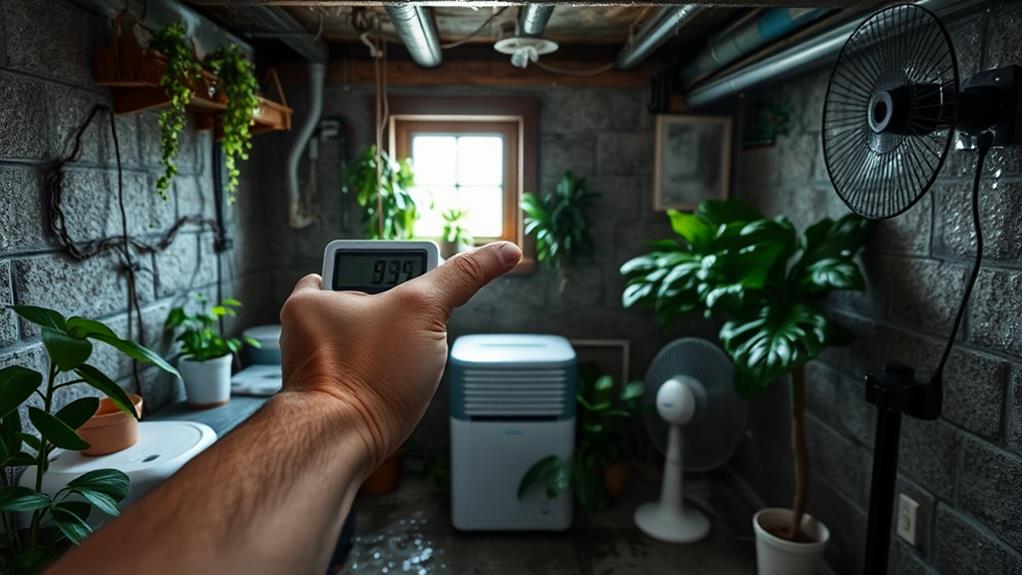
Effective moisture control stands at the forefront of eco-friendly mold remediation strategies. By addressing the root cause of mold growth, these techniques prevent recurrence and minimize the need for harsh chemical treatments.
Proper ventilation is crucial, especially in high-humidity areas like bathrooms and kitchens. Installing exhaust fans and ensuring adequate air circulation helps maintain optimal moisture levels.
Dehumidifiers play a vital role in reducing ambient humidity, particularly in basements and crawl spaces. These devices extract excess moisture from the air, creating an environment less conducive to mold growth. Regularly emptying dehumidifier tanks or directing the collected water to a drain is essential for their effectiveness.
Identifying and repairing water leaks promptly is another critical aspect of moisture control. Regular inspections of plumbing systems, roofs, and foundations can prevent water intrusion that leads to mold growth. Additionally, using mold-resistant materials in construction and renovation projects can provide long-term protection against moisture-related issues.
Proper landscaping and grading around the building's exterior help direct water away from the structure, reducing the risk of water seepage into basements or crawl spaces. These proactive measures contribute significantly to maintaining a dry, mold-resistant environment.
Baking Soda and Vinegar Methods
Natural and readily available, baking soda and vinegar offer eco-friendly alternatives for mold remediation. Baking soda, a mild alkaline compound, effectively absorbs moisture and neutralizes odors associated with mold growth. To use, mix baking soda with water to create a paste, apply it to the affected area, and scrub gently. Allow the paste to dry before wiping it away with a damp cloth.
Vinegar, containing acetic acid, is another potent mold-fighting agent. Its acidic nature disrupts mold cell structures, effectively killing up to 82% of mold species. For application, use undiluted white vinegar in a spray bottle, saturate the moldy surface, and let it sit for an hour before wiping clean.
For stubborn mold infestations, combine these methods. First, spray the area with vinegar and let it sit. Then, create a baking soda paste and apply it over the vinegar-treated surface. This two-step process enhances the mold-killing efficacy while providing a thorough cleaning action. After treatment, ensure proper ventilation to facilitate drying and prevent future mold growth. These natural remedies are particularly suitable for small-scale mold issues and offer a safe, non-toxic approach to household mold management.
Essential Oil Applications
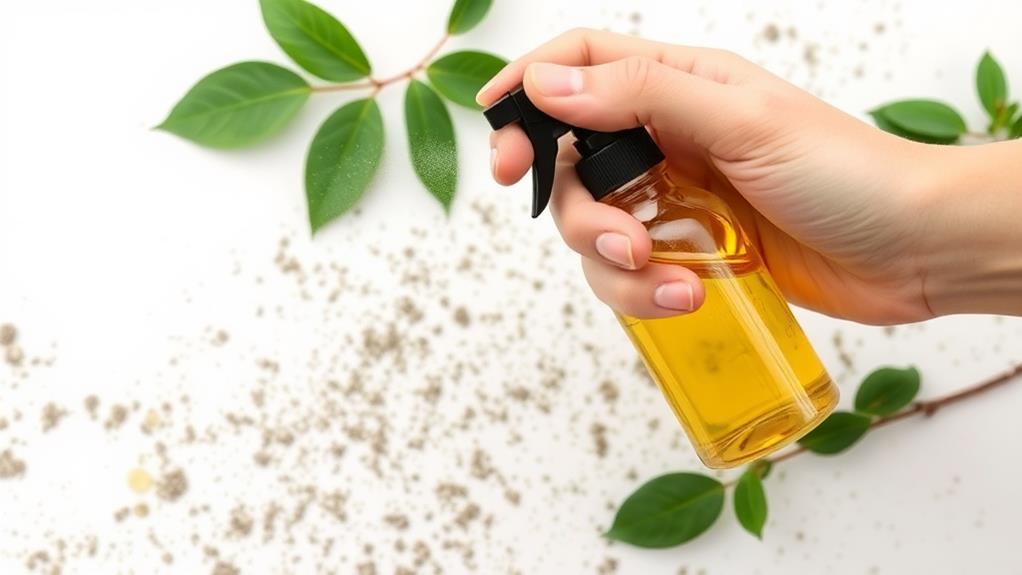
Essential oil powerhouses offer a potent, natural alternative for eco-friendly mold remediation. These concentrated plant extracts possess inherent antifungal properties that can effectively combat mold growth while maintaining a chemical-free approach. Tea tree oil, derived from the Melaleuca alternifolia plant, stands out as a particularly robust option due to its powerful antimicrobial capabilities.
To apply essential oils for mold remediation, create a solution by mixing 1 teaspoon of tea tree oil with 1 cup of water in a spray bottle. Alternatively, combine equal parts water and white vinegar with 10-15 drops of tea tree oil for enhanced effectiveness. Other essential oils with antifungal properties include eucalyptus, clove, and cinnamon. These can be used individually or in combination for a synergistic effect.
When using essential oils, ensure proper ventilation and wear protective gear, as some individuals may be sensitive to their potent aromas. Apply the solution directly to affected areas, allow it to sit for several hours, and then scrub away the mold. For persistent infestations, repeat the process daily until the mold is completely eradicated. Regular application can also help prevent future mold growth.
Hydrogen Peroxide Solutions
Among the eco-friendly options for mold remediation, hydrogen peroxide solutions stand out as a powerful and readily available choice. This common household item, typically found in 3% concentration, effectively kills mold spores through oxidation. When applied to affected surfaces, hydrogen peroxide breaks down the cellular structure of mold, destroying it at its source.
To use hydrogen peroxide for mold removal, pour it undiluted into a spray bottle and saturate the moldy area. Allow it to sit for 10-15 minutes, then scrub the surface with a brush or sponge to remove loosened mold. Wipe clean with water and dry thoroughly.
For larger or more stubborn infestations, repeat the process or consider using a stronger concentration, up to 35%, with proper safety precautions. Hydrogen peroxide is particularly effective on porous surfaces like drywall and wood, where other remedies may struggle to penetrate. It also works well on hard surfaces such as tile and glass.
As a bonus, hydrogen peroxide naturally breaks down into water and oxygen, leaving no harmful residues, making it an environmentally friendly choice for mold remediation in homes and businesses.
Improved Ventilation Strategies

Properly implemented ventilation strategies frequently serve as a cornerstone in eco-friendly mold remediation efforts. By improving air circulation and reducing humidity levels, these strategies effectively combat mold growth while minimizing the need for harsh chemical treatments. Key elements include the installation of exhaust fans in high-moisture areas like bathrooms and kitchens, as well as the use of whole-house ventilation systems to maintain consistent airflow throughout the structure.
Dehumidifiers play a crucial role in moisture control, particularly in basements and crawl spaces prone to dampness. When coupled with proper insulation and vapor barriers, these devices significantly reduce the likelihood of mold proliferation. Additionally, implementing a regular schedule for opening windows and doors can promote natural air exchange, especially during drier weather conditions.
For more complex situations, consider installing heat recovery ventilators (HRVs) or energy recovery ventilators (ERVs). These systems efficiently exchange indoor and outdoor air while maintaining temperature control and energy efficiency. By addressing the root causes of excess moisture and stagnant air, improved ventilation strategies offer a sustainable, long-term approach to mold prevention and remediation.
Tea Tree Oil Treatments
While ventilation strategies address the underlying conditions that promote mold growth, tea tree oil treatments offer a natural, targeted approach to eliminating existing mold infestations. Tea tree oil, derived from the leaves of Melaleuca alternifolia, contains powerful antifungal and antibacterial properties that effectively combat mold spores.
To create a tea tree oil solution for mold remediation, mix one teaspoon of tea tree oil with one cup of water in a spray bottle. Apply this mixture directly to moldy surfaces, allowing it to sit for several hours before wiping clean. For more stubborn infestations, increase the concentration or leave the solution overnight.
Tea tree oil treatments are particularly effective for small to medium-sized mold problems in bathrooms, kitchens, and other moisture-prone areas. However, it's important to note that while tea tree oil can kill existing mold, it doesn't prevent future growth. Regular application may be necessary in high-risk areas.
When using tea tree oil, ensure proper ventilation and wear protective gear, as the strong scent can cause respiratory irritation in some individuals. Additionally, keep the solution away from pets, as it can be toxic if ingested.
Frequently Asked Questions
How Long Does Eco-Friendly Mold Remediation Typically Take Compared to Conventional Methods?
Eco-friendly mold remediation typically takes slightly longer than conventional methods, often requiring an additional 1-3 days. This is due to the use of natural products and processes, which may need more time to effectively eliminate mold growth.
Are Eco-Friendly Mold Remediation Techniques Effective for All Types of Mold?
Ever wondered about the versatility of green mold solutions? While eco-friendly techniques are effective for many mold types, certain severe or toxic infestations may require more aggressive treatments. The effectiveness depends on the specific mold species and extent of growth.
What Are the Cost Differences Between Eco-Friendly and Traditional Mold Remediation?
Cost differences between eco-friendly and traditional mold remediation vary. Eco-friendly methods often have higher upfront costs due to specialized products, but may offer long-term savings. Traditional approaches can be less expensive initially but may require more frequent treatments.
Can Eco-Friendly Mold Remediation Methods Prevent Future Mold Growth?
Going the extra mile, eco-friendly mold remediation methods can indeed help prevent future mold growth. By addressing root causes and using natural antimicrobial agents, these approaches create an environment less conducive to mold recurrence, promoting long-term protection.
Are There Any Health Risks Associated With Eco-Friendly Mold Remediation Techniques?
Health risks associated with eco-friendly mold remediation techniques are generally minimal. However, some natural products may cause allergic reactions in sensitive individuals. It's important to follow proper safety protocols and consult professionals when dealing with extensive mold issues.
Conclusion
In the realm of eco-conscious mold remediation, a bouquet of green solutions emerges. From nature's pantry of antimicrobial agents to the invisible dance of enzymes, these approaches offer a gentler touch. Advanced filtration systems and the sun's purifying rays join forces with moisture-taming strategies. Aromatic allies and oxygen's effervescent cousin provide additional weaponry. By embracing improved air circulation and harnessing the power of certain botanical essences, a harmonious balance can be achieved, fostering both structural integrity and environmental stewardship.
